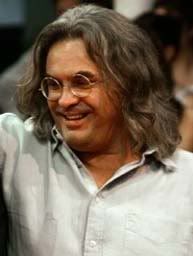You know what I'm talking about: the constant insistence of random, second and third-tier directors that shaking the camera violently somehow immerses the viewer in the action.
I've gotten literal headaches from it. On a dozen different occasions, I was unable to tell what was happening. On exactly zero occasions was I more immersed in the film.
I hate shakycam. Hate it hate it hate it. It's stupid. More than that, it's dumb. Review after review will praise a film, offering only a qualifier about the shaky camera as criticism. And yet, it keeps happening.
Who actually likes this technique? I can see someone giving it a try in hopes that it makes for a more engrossing action sequence, but surely seeing it on screen would squash that notion. And if it didn't, surely the vitriol which has resulted would convince filmmakers that it's absolutely despised. What could possibly convince them that people like it?
Does anyone like shakycam? Does one single human being here like it? Are directors being bribed by Tylenol Extra Strength © to keep using it? Discuss.
I've gotten literal headaches from it. On a dozen different occasions, I was unable to tell what was happening. On exactly zero occasions was I more immersed in the film.
I hate shakycam. Hate it hate it hate it. It's stupid. More than that, it's dumb. Review after review will praise a film, offering only a qualifier about the shaky camera as criticism. And yet, it keeps happening.
Who actually likes this technique? I can see someone giving it a try in hopes that it makes for a more engrossing action sequence, but surely seeing it on screen would squash that notion. And if it didn't, surely the vitriol which has resulted would convince filmmakers that it's absolutely despised. What could possibly convince them that people like it?
Does anyone like shakycam? Does one single human being here like it? Are directors being bribed by Tylenol Extra Strength © to keep using it? Discuss.






